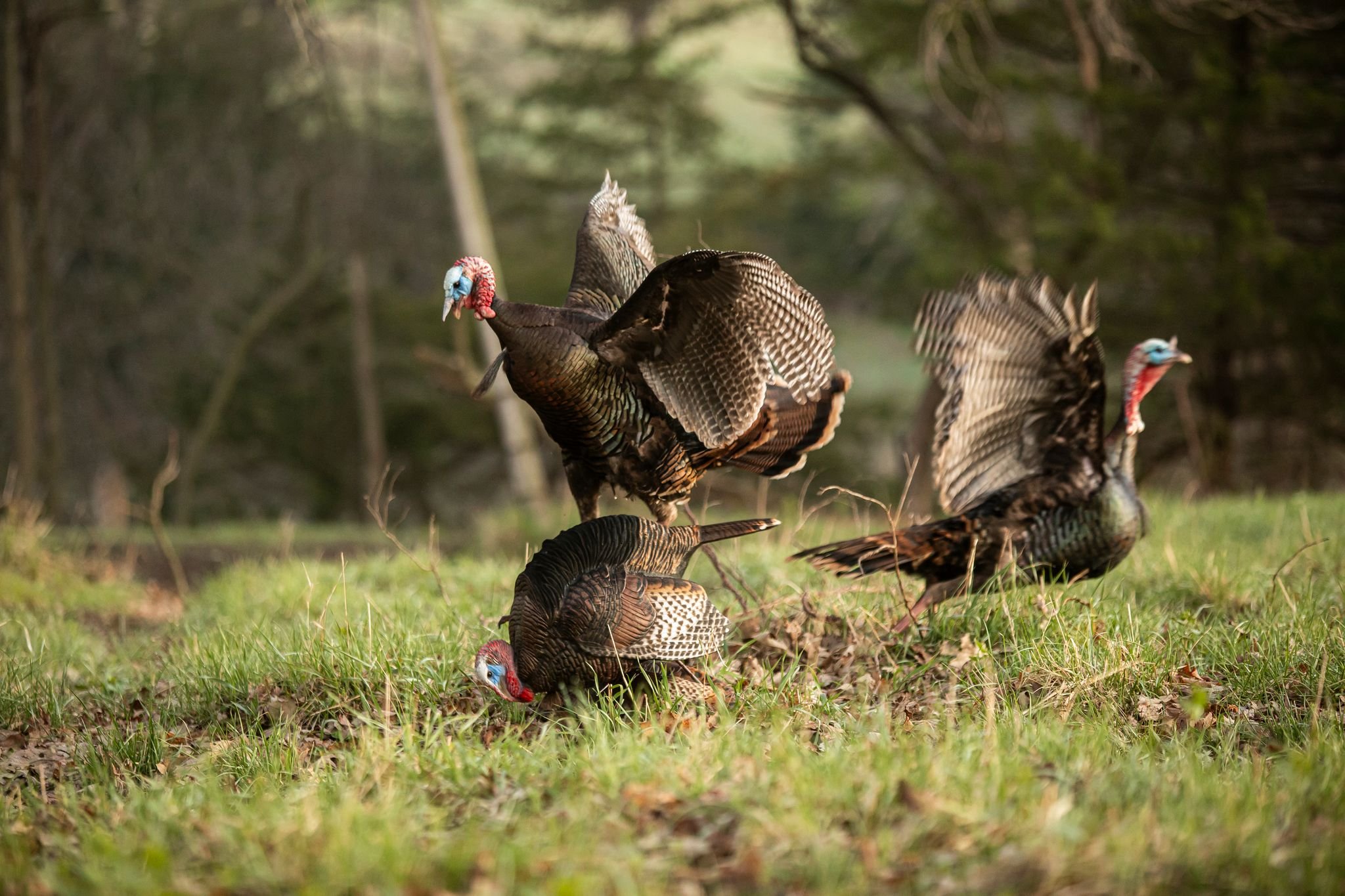When and Why Turkeys Gobble
Perhaps the most memorable of the sights, sounds, and feelings of turkey hunting is the thunder of a springtime gobble. The sound, when present and frequent, makes even the most experienced hunter’s heart skip a beat. When absent, it can send the most knowledgeable turkey hunter into a stoop of disappointment and confusion.
Todd Craighead, the Producer and Host of the Outdoor Oklahoma TV Show, has been a student of the wild turkey for decades. His work with the Oklahoma Department of Wildlife Conservation has granted him access to top wildlife biologists, who also share the fascination of gobbling turkeys that he does.
To understand why and when turkeys gobble, it’s helpful to understand their biology and behaviors.
Turkey Biology and Seasonal Patterns
This may surprise a lot of folks who aren’t in the woods or have trail cameras running every day of the year, but male turkeys do strut and gobble year-round. The reason that male turkeys strut is to show off their plumage and attract a mate. While the hen turkey is the one who dictates when the mating season begins, which gobblers they want to breed with, and where they want to breed, in the mind of the gobbler, this can happen at any time.
During the peak of the turkey breeding season, a hen can get bred every single day, and sometimes multiple times a day, just to make sure that she has the best chance to produce offspring. The gobbler will develop a breeding harem, where he is breeding multiple hens, multiple times a day, peaking in March.
After the majority of the breeding has happened, that is when most states start their turkey season. Because the toms have been breeding all of March, they don’t necessarily understand that the large majority of breeding has already happened when the season opens and the hens are no longer interested in him. He still thinks that he deserves more than his fair share.
In most states, hens start slipping out of the flock to nest and lay their eggs around April. While they still roost with the flock in the evenings, they will slip off mid-morning to sit over their nest. The Tom then gets left with fewer hens after having the time of his life breeding all March. This is typically when you hear Tom’s gobble all day long, in desperate search for hens that are no longer interested. He’s thinking, “Where did my hens go? Come back!”.
The Turkey Hunter’s Paradox
According to the laws of nature, all the Tom has to do to secure his mate is gobble and strut, and the hens will come to him. As hunters, we have the challenge of appealing to his senses in such an overwhelming way that the gobbler breaks his natural pattern and comes to the hunter.
Older gobblers are some of the hardest to kill, not because they have been pressured heavily or been shot at, called at, and messed with, but because he is so used to the hens coming to him for three, four, five years. Meanwhile, jakes can be easier to call in because they haven’t had a lifetime pattern of hens coming to them.
So when does a turkey gobble the most?
In Todd’s opinion, gobbling is to show hens that the tom is there. Gobbling at first light or on the roost is a sort of communication to let everyone know that they are awake and ready to get the day started. Once they hit the ground, it is more of a hormonal instinct.
The weather conditions for gobbling are where things get a little cloudy. Like moon phase effects on deer movement, barometric pressure is a very reasonable hypothesis for a turkey’s gobbling frequency. Todd suggests that low barometric pressure suppresses gobbling activity, while high barometric pressure typically yields more frequent gobbling. His hypothesis is backed up by data cited by the National Wild Turkey Federation. According to the NWTF, barometric pressures of 29.9 to 30.2 inches yield the highest vocal activity from turkeys. Barometric pressures below 29.7 inches decreased vocalization dramatically.
The National Wild Turkey Federation has also cited some interesting data on wind speeds and gobbling frequency. Gobbling was the most frequent when winds were 3-6 mph. Once the wind hit 12 mph, gobbling activity was severely suppressed.
Factoring in barometric pressure and wind speed can be an important factor in where to set up, the hunting strategy you deploy, and your expectations for a hunt.
This article was written in reference to Episode #22- An Able Mind, of the Turner Rowland Podcast, brought to you by Waypoint TV. CLICK HERE to listen to the full episode.
CLICK HERE to watch the new season of Heartland Bowhunter, Full Strut
ABOUT THE AUTHOR
Turner Rowland (right) was born in Key West, Florida, and has an avid passion for inshore and offshore fishing. After moving to Tennessee early in life, he began a life-long fascination with wildlife, hunting, and fishing that has taken him around the world to places like Bolivia, Christmas Island, Alberta, South Africa, Zimbabwe, and Zambeze. He currently resides in Bozeman, MT where he is passionate about elk, deer, turkey, duck, antelope, and bear hunting after cutting his teeth as a wilderness elk hunting guide.



